Canada’s Niagara region has declared a state of emergency as it prepares for an influx of one million tourists ahead of next week’s solar eclipse.
The total solar eclipse on April 8 will be the first in the region in 45 years, and the city of Niagara Falls is directly in the path of totality, where the moon will obscure its face from the sun for a few minutes.
A map from the National Solar Observatory shows that the city, located on the US-Canada border, will have 100 percent coverage for about 3 minutes and 30 seconds.
Faced with the avalanche of visitors, the Greater Niagara region has preventively declared a state of emergency.
Niagara Falls Mayor Jim Diodati estimates that around a million tourists will flock to see the spectacle – 14 times more visitors in a single day than the city normally sees in a year.
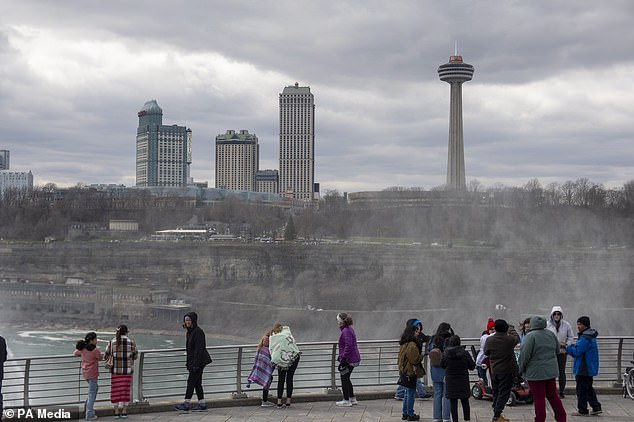
The Niagara region of Ontario has declared a state of emergency in anticipation of a flood of tourists
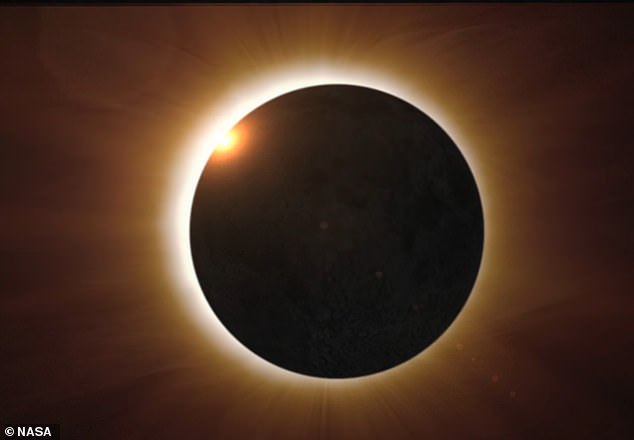

The city of Niagara Falls, on the US-Canada border, expects to welcome around one million visitors on April 8, 14 times more than the city usually sees in a year.
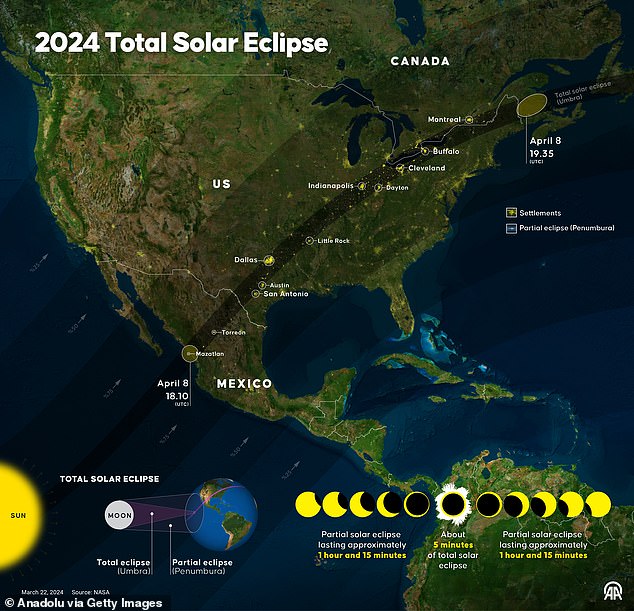

The total solar eclipse will be the first in the region in 45 years
The state of emergency “reinforces the tools the region has at its disposal to safeguard the health and safety of residents and visitors and protect our critical infrastructure in any scenario that may arise,” according to the official announcement.
It puts some planning tools in place to prepare for traffic jams, increased demand for emergency services and overloads of mobile phone networks.
T-Mobile is rolling out additional cell sites to combat service disruptions amid the surge in visitors.
“On April 8, the spotlight will be on Niagara as thousands of visitors join us to share in this once-in-a-lifetime event, and we will be ready to shine,” said Niagara Regional President Jim Brady.
He extended his gratitude to local agencies “who have been working together diligently to ensure that our community can offer a safe and unforgettable experience, both for our visitors and for all those who call Niagara home.”
The news release urges people to prepare for crowds and long lines, and to consider stocking up on food and fuel before the eclipse.
Most schools in the region will be closed on April 8. “Have a child care plan in place and make sure children know how to view the eclipse safely,” the announcement reads.
This includes only using ISO 12312-2 certified eclipse glasses.
As the sky darkens during a solar eclipse, observers along the path of totality will see the sun’s corona, or outer atmosphere, which appears as a ring of bright light and can cause eye damage.
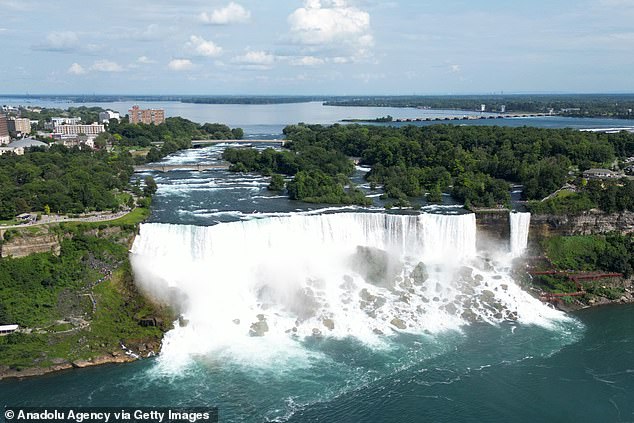

The state of emergency is expected to help counteract traffic problems, increased demand for emergency services and overloading of the mobile phone network.
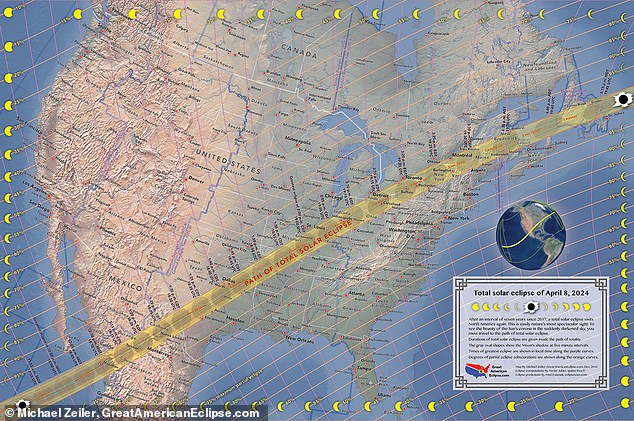

States south of the border, especially Texas, are also expected to see an influx of tourists.
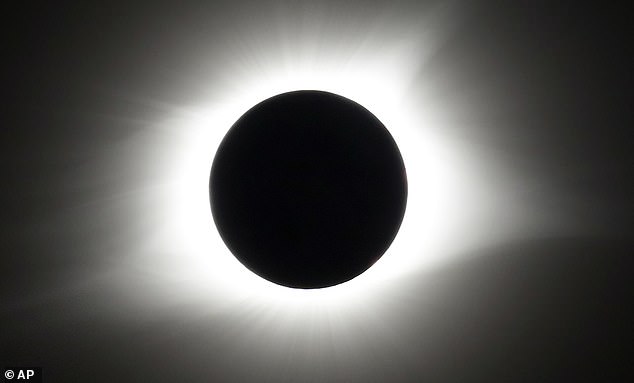

Viewers are urged to use only ISO 12312-2 certified eclipse glasses, as the sun’s corona (or outer atmosphere) can cause vision damage.


Some Canadians took to social media to criticize the state of emergency as an “overreaction.”
While some Canadians admitted the government was taking appropriate measures to counter the rush of tourists, others took to social media to air their grievances, calling the state of emergency an “overreaction.”
‘So we’re going to suspend the Charter because of an eclipse?!?!?’ asked a man on X, formerly Twitter.
‘Oh Lord. Talk about an overreaction. How the hell were they chosen? This is your tax money in action,” another complained.
States south of the border are already seeing the effects of a swarm of visitors.
It is estimated that between 270,000 and one million people will travel to Texas due to its excellent location in the path of totality.
The city of Dallas has seen a 571 percent increase in hotel reservations for the days leading up to the solar eclipse.
Lodging prices in Waco increased by 81 percent, while prices in Cleveland and Austin also increased by 33 and 34 percent, respectively.

